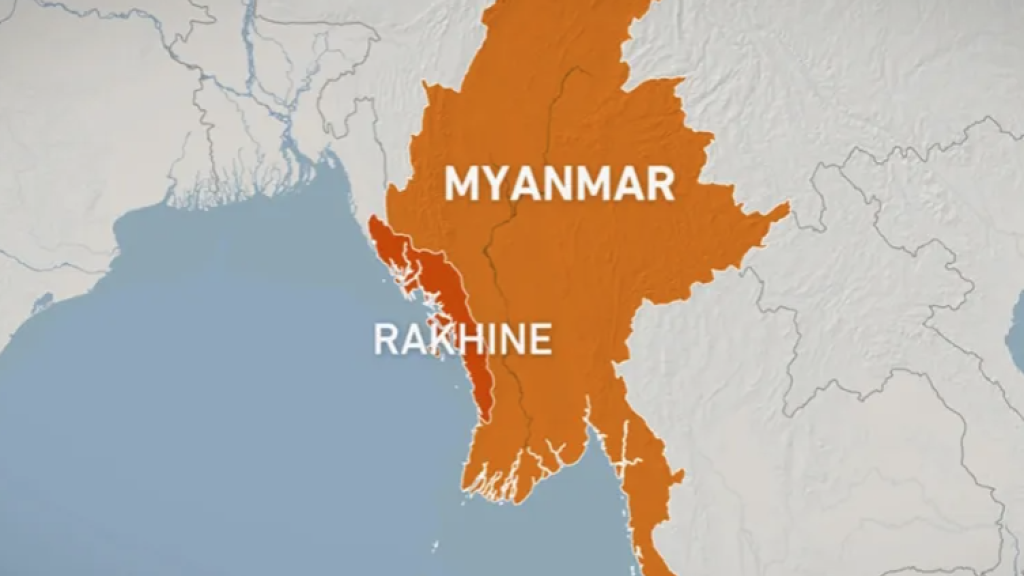The unending storm: Conflict, power and survival in Myanmar’s Arakan state

The Arakan state is a region of breathtaking landscapes and ancient kingdoms, but has become synonymous with one of the world’s most protracted and brutal conflicts. The struggle between the Buddhist-majority Rakhine and the Muslim Rohingya is not merely a local ethnic or sectarian clash but a microcosm of Myanmar’s broader civil war, where competing nationalisms geopolitical interests, and survival instincts collide.
This article delves into the origins, evolution and devastating consequences of the Arakan conflict, examining the roles of armed groups, regional powers and shadow economies that sustain the violence. It also explores the human cost — particularly for women and children — and assesses whether a lasting peace is possible in a land where war has become a way of life.
Historic roots: From kingdom to conflict zone
The Arakan region was once an independent Buddhist kingdom, with a rich history of trade and cultural exchange with Bengal. Muslim communities, including Rohingya ancestors, lived in Arakan for centuries, serving as traders, soldiers, and administrators under Arakanese kings.
British rule (1824–1948) exacerbated ethnic tensions by encouraging Bengali Muslim migration for labour, altering Arakan’s demographics. Post-independence, Myanmar’s nationalist government viewed the Rohingya as illegal immigrants, stripping them of citizenship in 1982.
Communal violence in 2012 marked a turning point, with Rakhine Buddhists and Rohingya clashing in deadly riots. The Myanmar military’s “clearance operations” in 2017, in what the United Nations called a “textbook example of ethnic cleansing,” forced more than 700,000 Rohingya into Bangladesh.
Founded in 2009, the Arakan Army (AA) initially fought alongside the Kachin Independence Army (KIA) before shifting focus to Rakhine. After Myanmar’s 2021 coup, the AA exploited the junta’s weakness, seizing vast territories and imposing its own governance.
The Arakan Army’s military strategy
The AA transitioned from hit-and-run tactics to full-scale offensives, using drones, artillery and weapons captured from the junta. By 2024, it controlled 60% of Rakhine state.
The AA claims to fight for Rakhine autonomy but has been accused of systematically expelling Rohingya from captured territories. Massacres in Buthidaung and Maungdaw mirror the junta’s 2017 operations.
Desperate for manpower, the junta coerced Rohingya into militias, pitting them against the AA — a tactic that deepened inter-communal hatred.
Rohingya resistance: Between survival and militancy
The Arakan Rohingya Salvation Army (ARSA), formed in 2016, launched attacks on police posts in 2017, triggering the military’s genocidal response. Though weakened by 2025, ARSA remains active in border areas.
The Rohingya Solidarity Organisation (RSO), backed by Saudi Arabia in the 1980s, has resurfaced in recent years but lacks popular support. Its fighters now operate as mercenaries for various factions.
Despite having no army, Rohingya villagers have organised self-defence groups, using improvised weapons to resist AA incursions.
The humanitarian crisis: A state of permanent emergency
More than 1.2 million Rohingya are refugees, with 500,000 newly displaced since 2024. Bangladesh refuses further entries, leaving thousands stranded in minefields along the border.
Both the AA and Myanmar junta have blocked food aid, leading to starvation in northern Rakhine. Médecins Sans Frontières reports children dying from malnutrition at alarming rates.
A 2025 survey found 80% of Rohingya refugees suffer from PTSD, with suicide rates tripling since 2022.
Geopolitics: The great power game in Arakan
China arms the AA to protect its Kyaukphyu port but publicly supports the junta to maintain diplomatic cover.
India backs the junta to counter Chinese influence but turns a blind eye to AA drug trafficking into Manipur.
Bangladesh demands Rohingya repatriation but profits from the camps’ criminal economy, including human trafficking.
The shadow war: Drugs, arms and warlords
The AA funds its war through yaba (meth) production, smuggling $3 billion worth annually into neighbouring countries.
Chinese and Indian weapons flow into Rakhine via Thailand and Manipur, with brokers taking cuts at every border crossing.
Figures like Dil Mohammed rule refugee camps, such as Cox’s Bazar, through violence, controlling aid distribution and drug routes.
The future: Can Arakan ever know peace?
Myanmar’s offers to take back Rohingya are hollow without citizenship guarantees.
The AA seeks autonomy, but its exclusion of Rohingya risks perpetual conflict.
The International Criminal Court and International Court of Justice have stalled on holding perpetrators accountable, emboldening further atrocities.
Unless global powers intervene decisively, Arakan’s cycle of violence will continue, leaving another generation to inherit its scars.
The author can be contacted at rohingyaemergencyresponseteam@gmail.com.